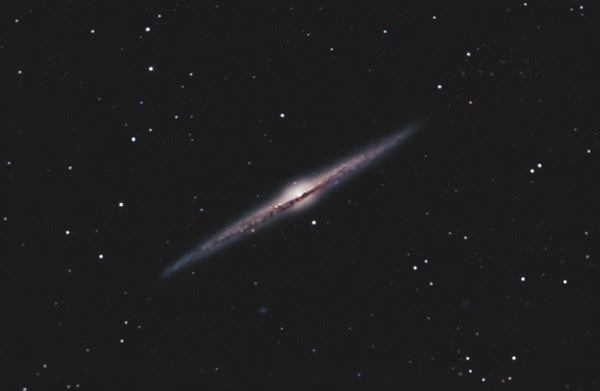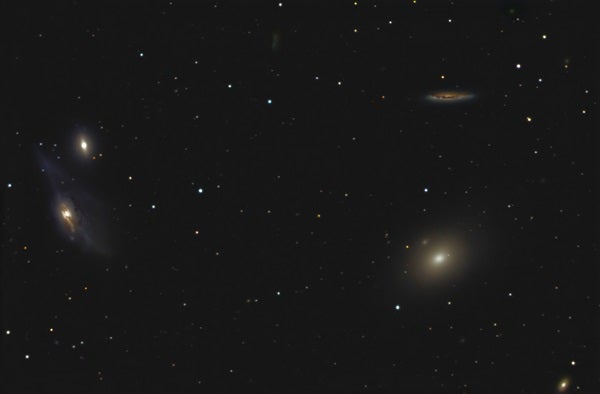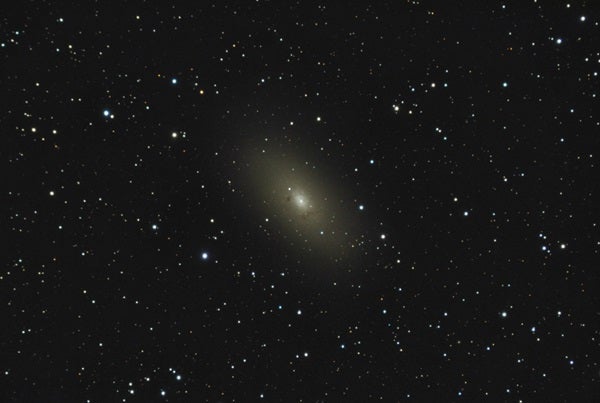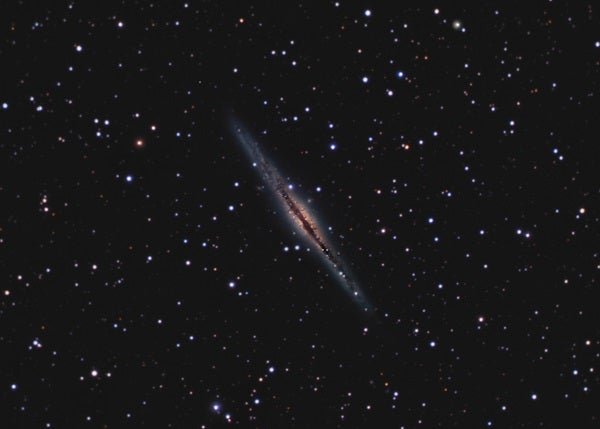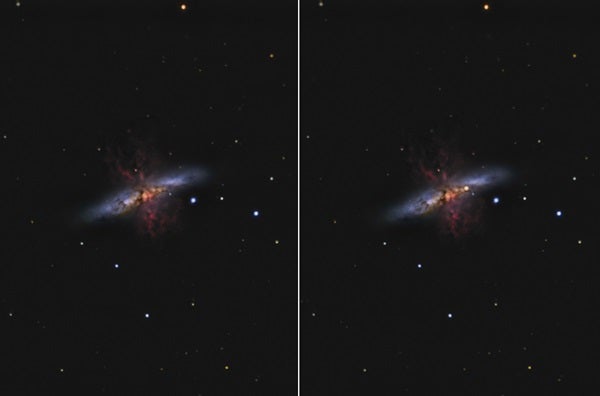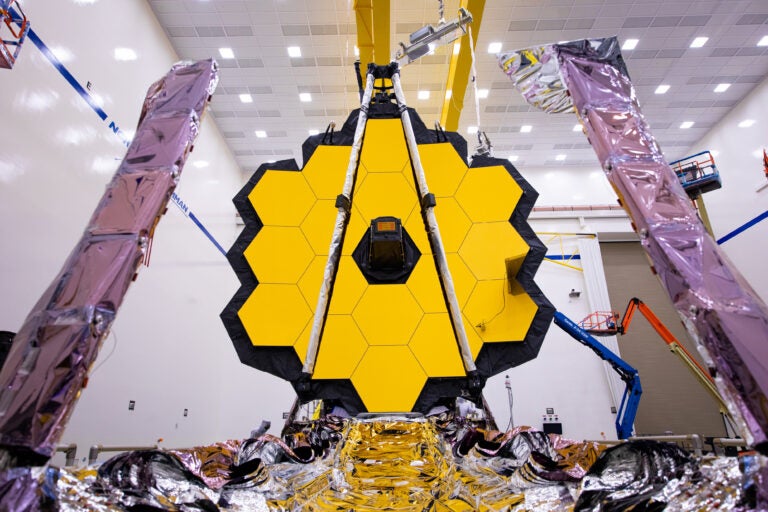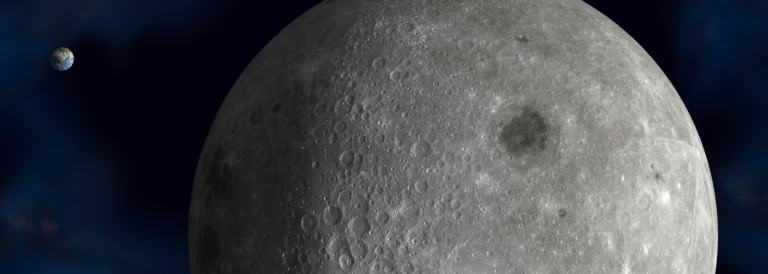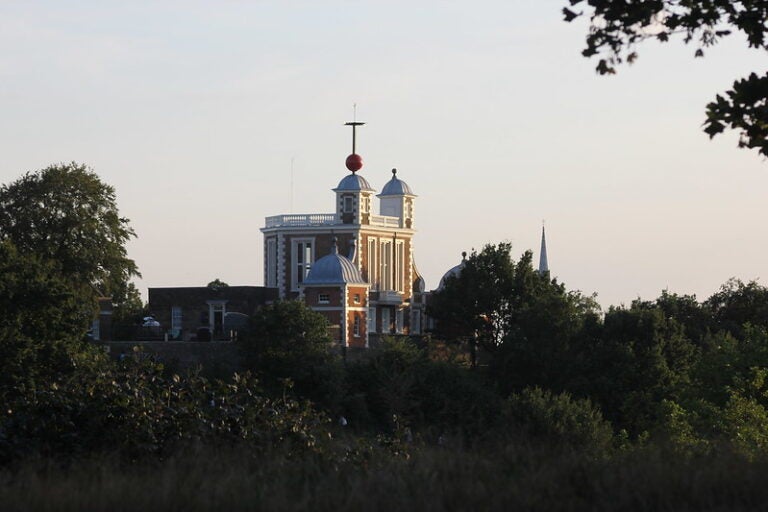And Hubble made another major contribution for which we deep-sky observers will be forever in his debt: a classification system for galaxies.
The Hubble classification
Hubble published the most widely used version of his system in 1936, a decade after his first draft. The system is simple to learn, following a two-pronged “tuning fork” model. The handle and each prong represent one of three classes of galaxies: ellipticals, spirals, and barred spirals.

Bringing the universe to your door. We’re excited to announce Astronomy magazine’s new Space and Beyond subscription box – a quarterly adventure, curated with an astronomy-themed collection in every box. Learn More >>.
Elliptical galaxies, designated by the letter E, form the handle. As their name suggests, these galaxies are roughly elliptical in shape, but they are further classified by how stretched and squashed they appear. Spherical galaxies are designated E0, slightly elongated ellipticals are E1, and so on, with cigar-shaped ellipticals designated as E7. Elliptical galaxies are featureless patches of light without spiral arms or dust lanes, and they have no active star-forming regions.
Spiral galaxies, designated by the letter S, form the upper prong of the tuning fork. They have two major features: a central bulge containing old stars surrounded by a flat disk with spiral arms actively forming new stars. Hubble further classified them into three groups: Sa, Sb, and Sc, based on the openness of the spiral arms and the relative size of the central bulge. Class Sa shows tightly wound, almost circular spiral arms and a large central bulge that occupies a majority of the disk, whereas class Sc has multiple open spiral arms, and the central bulge is small and inconspicuous. Those that fall between the two extremes are designated as Sb galaxies, which have definite spiral arms and a central bulge that occupies a minor, but still obvious, portion of the disk.
Barred spirals, designated SB, form the lower prong of the tuning fork. They have a bar of stars crossing the central bulge. Spiral arms extend from each end of the bar like streamers from the ends of a bicycle handlebar. Barred spirals also have three subclasses, SBa, SBb, and SBc, using the same scheme as the classic spirals. (Our own Milky Way is a barred spiral, probably an SBb in Hubble’s scheme.)
At the dividing point in the tuning fork exists a special class of galaxies known as lenticulars (lens-shaped), designated S0. These galaxies have a large central bulge surrounded by an extended disk-like structure. However, the disk lacks visible spiral arms and is not actively forming any significant quantity of new stars. S0 galaxies are considered a transitional form between the ellipticals and the two classes of spirals. Their addition to the system was one of the revisions Hubble made in 1936. Hubble postulated their existence prior to that, but the overexposed bright centers of lenticular galaxies on earlier, small-scale glass photographic plates overwhelmed their extended disks, rendering them indistinguishable from ellipticals.
Familiarity with this system can be extremely valuable while observing galaxies. If you know the Hubble classification of a galaxy you are observing, then you can search for certain structural features characteristic of that class and confirm their presence. On the other hand, when you don’t know a galaxy’s class, you can hunt for clues that might reveal the class, and if you find them, the entire view will suddenly make sense to you. You will gradually learn to systematically check every galaxy for certain structural details you might have otherwise overlooked, making you a better observer.
Professional astronomers have added to Hubble’s scheme, using a more complex version developed by French-American astronomer Gerard de Vaucouleurs in the 1950s and onward. For backyard observing purposes, however, the Hubble scheme works well because the de Vaucouleurs scheme introduces many more complexities that are not visible through telescopes.
Observing on the edge
I recommend you begin trying to classify spiral galaxies by observing “on the edge” — that is, seeking galaxies that present us with an edge-on view. With oblique and face-on galaxies, a bright nucleus marks the central bulge, but it’s difficult to discern the full extent of the galaxy’s disk. A galaxy’s disk is hundreds to thousands of times fainter than the nucleus, and while the human eye can detect tremendous differences in brightness, only the brightest central portions of the disk will be visible. These factors make it difficult to judge the size ratio between central bulge and disk. To make matters worse, only a handful of the nearest galaxies have discernible spiral arms that permit us to judge how tightly wound they are. The final blow is that SB galaxies, in which a bar is visible, are somewhat rare.
With edge-on galaxies, circumstances are much more favorable. The light from the disk and central bulge integrates into a single plane, making them brighter and including nearly the full extent of the disk. The relative sizes of the central bulge and the disk are readily apparent, permitting easy classification. The bar in SB galaxies cannot be seen in profile, and so becomes irrelevant. The nucleus usually can be seen within the central bulge, so these objects offer good opportunities to learn how to estimate the size of a galaxy’s central bulge based on the size of its nucleus. This will help you eventually classify oblique spirals.
Most of all, edge-on galaxies are simply beautiful to behold. Their symmetry is striking. Dark dust lanes silhouetted against the equator of a bright edge-on galaxy provide a striking visual contrast. And if you want to observe galaxies that actually resemble their appearance in photographs, then edge-on galaxies are your best bet.
Ellipticals
The central, dominant galaxy in the Virgo Cluster is M87, a giant E0 galaxy. It’s easy to see this galaxy as perfectly round. As a challenge, look slightly to the west at M86. Even a small scope will show it definitely is not perfectly round. The mild eccentricity of this galaxy, which is featureless even through large apertures, earns it a classification of E3.
One of the satellite galaxies of the Andromeda Galaxy (M31), NGC 205, is a large bright E5. It is so elliptical that it is twice as long as it is wide, measuring 10′ by 5′. Visually, it brightens gradually toward a much brighter center, and larger scopes show a non-stellar nucleus.
Lenticulars
Having covered the handle of the tuning fork, we arrive at the branch point, occupied by S0 galaxies. A splendid example is NGC 5866 in Draco.
Edge-on spirals
NGC 7814, known as the Little Sombrero Galaxy because of its similarity to M104 in Virgo, is an edge-on Sa galaxy in Pegasus. It is small, measuring 5.5′ by 4.3′, and has a large football-shaped central bulge that occupies most of the diameter of its disk, which continues as thin, dim projections on either side visible with averted vision in an 8-inch scope.
Through large scopes, a thin, dark dust lane splits the central bulge perfectly and extends into the disk. The dust lane almost disappears at its midpoint where it bisects and is nearly overwhelmed by a nucleus that is brighter on the north side.
The sky offers two splendid, but contrasting, edge-on Sb galaxies. NGC 891 lies 3.5° east of the beautiful double star Almach (Gamma [γ] Andromedae). Through small scopes it appears as a faint discus of light measuring 15′ by 3.8′ floating in a sea of foreground stars that provides a stunning 3-D effect. The central bulge occupies one-third the diameter of the disk and tapers gradually toward the tips. NGC 891 has no visible nucleus because it is obscured by its perfectly centered dust lane. An 8-inch scope and dark skies are required to spot the subtle but fairly wide dust lane against the slightly brighter central bulge. Larger apertures will show the dust lane extending farther into the disk on either side.
NGC 4565 lies 1.5° due east of the star 17 Comae Berenices and measures a large 20′ by 3.6′. Through the telescope, it is a beautiful sight, appearing as a long, thin sword of light with a central bulge occupying only one-sixth the diameter of the disk. It resembles a flying saucer in science-fiction movies or two fried eggs placed back to back. Even medium-sized telescopes reveal the dark dust lane dividing the central bulge almost equally. A bright stellar nucleus beams out from the north side of the dust lane.
NGC 5907 is a splendid example of an edge-on Sc galaxy. The combination of its tiny, inconspicuous central bulge and a disk that is flatter than NGC 4565’s makes it look like a mere splinter of light and hence its nickname, the Needle Galaxy. Through the telescope, you’ll see a galaxy that is amazingly nine times longer than it is wide, measuring 12.7′ by 1.4′. Scopes 8 inches and larger show an elongated nucleus and subtle mottling from equatorial dust lanes.
Irregulars
M82 is emblematic of an irregular galaxy. Its nickname, the Cigar Galaxy, suggests an E7 elliptical, but this object is rich in dust clouds and bright areas of star formation. It also appears discoid, but it lacks defined spiral arms. M82 is a system in a burst of star formation, probably as a result of a galaxy merger. Numerous supernovae, the most recent of which was visible through amateur scopes in early 2014, have created superheated winds of plasma that flow out perpendicular to its long axis on either side. A 6-inch scope shows a cigar of light with a wedge-shaped, dark dust cloud intruding from the south side. Larger scopes show three more dark lanes toward the east end, mottling on the west side, and bright knots near the center.
Go observing
The deep sky is filled with galaxies of diverse shapes, but they all fit into the Hubble classification scheme. Now that you know the system, use your scope to observe more elliptical and edge-on galaxies and try to classify them. Check your conclusions against databases and hone your skills. Then take your skills to the next level by trying to classify galaxies. You will start noticing more details than you thought possible and enjoy observing galaxies more than ever before.

